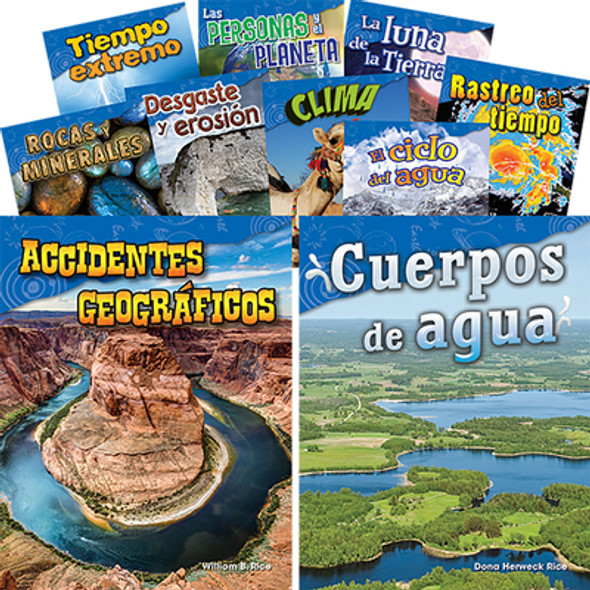Description
How do animals adapt to their environment? What is a food web? How does a caterpillar become a butterfly? Introduce second and third grade students to life science and STEM topics with this intriguing 10-book set. These nonfiction Spanish books feature intriguing images, a glossary, an index, and helpful diagrams to keep students engaged in reading as they learn important scientific topics such as pollination, ecosystems, habitats, adaptation, and more. Each 32-page book includes a fun science activity that meets Next Generation Science Standards and helps students apply what they've learned. Titles in this Spanish language set include: Polinización (Pollination); Fotosíntesis (Photosynthesis); La interdependencia de los seres vivos (Interdependence of Living Things); Ecosistemas (Ecosystems); Ciclos de vida (Life Cycles); El medio ambiente adecuado (The Right Environment); Hábitats (Habitats); El medio ambiente: Un mundo de cambios (Environment: A World of Change); Redes alimentarias (Food Webs); Características de supervivencia (Traits for Survival).
Title Metadata
Author: |
Multiple Authors |
Publisher: |
Teacher Created Materials |
Language: |
Spanish |
Copyright: |
2017 |
Number of Pages: |
320 |
Binding Type: |
Paperback |
Interest Age: |
9 |
Guided Reading Level: |
N |
Guided Reading Interest Age: |
Grade 3 |







